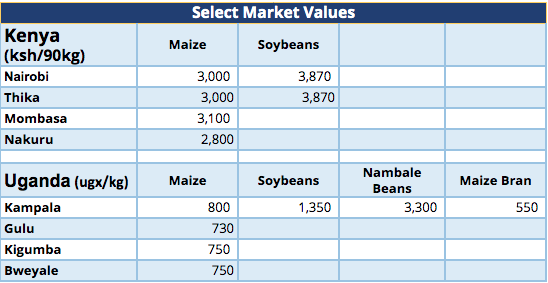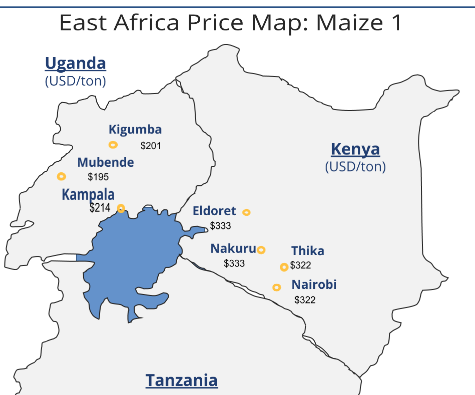Africa News
Africa Newsletter 08-07-20
East Africa Update
Tanzania And Uganda Supply The Majority Of Kenya’s Maize Imports
Kenya’s maize imports in the second quarter of 2020 have mainly been supported by Tanzania and Uganda as Kenya’s demand for the the grain continued even during the lockdown period whereas the total maize traded in the region fell due to the restrictions and closures of many businesses and public institutions.
According to Business Daily, the Food Security and Nutrition Working Group has produced a study on the recent trade flows in the region which have looked at a number of grains and pulses including sorghum, wheat, millet, green grams and beans.
Kenya imported 44,740 metric tons of white maize from the region while the country’s stockpiles stood at 3.45 million 90kg bags compared the nations monthly requirement of 4.25 million 90kg bags.
Uganda Market Update
Maize is currently trading circa UGX 750 per kg in the Kampala area as more of the dry grain enters the market from the growing regions. The demand is still low as many public institutions that would normally buy large quantities still remain closed. Many millers are looking at alternative products to offer such as maize bran which is currently trading at UGX 550 per kg in Kampala.
Soybeans have recently reached UGX 1,250 per kg in the Kampala area after suppliers from Kamdini and Minakulu in Northern Uganda started releasing more of their product into the market. White sorghum remains at UGX 1,100 per kg and Nambale Beans are quoted at UGX 3,300 per kg in Kampala.
Concerns Of High Aflatoxins Levels In Grain In Kenya
The Kenya Bureau of Standards (KEBS) have raised concerns on the high levels of aflatoxins in maize from the areas of Meru, Ukambani and Western Kenya, except Uasin Gishu and some parts of Trans Nzoia, and that this has put even more pressure on millers who were already managing production with low stocks of good quality maize.
The Daily Nation reports on how the issue of high aflatoxin levels has even been raised from users of maize flour and that state agencies and even retail outlets are expected to check the quality of the products before it is made available to consumers.
Aflatoxins are measured by parts per billion (ppb) and any count over 10 ppb is considered to be contaminated as it is produced by a fungus that grows on maize, groundnuts, sorghum and other crops. Aflatoxins have been linked to liver cancer and can be fatal as KEBS has previously suspended 17 maize flour brands for offering products that contain high levels.
For updates on restarting the global trade please see our report Hot Commodities at panxchange.com/hot-commodities



